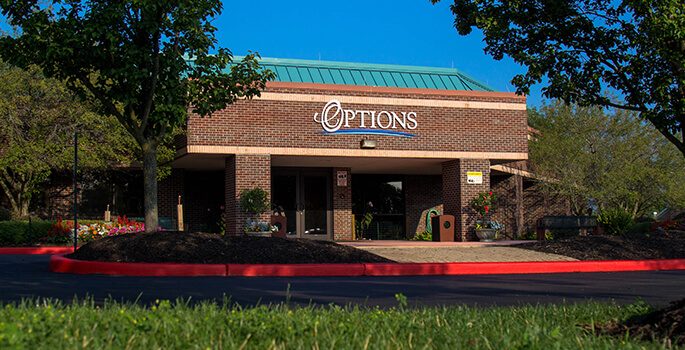Understanding the signs, symptoms, causes and effects of prescription drug addiction is an important first step toward healing and recovery.
Understanding Prescription Drugs
Learn about prescription drugs and substance abuse
Most people go to the doctor for legitimate medical reasons and are prescribed medication to manage a host of conditions. Most people take these medications as directed and stop when the course of medication is over. However, some individuals come to like the effects of certain types of prescription medications and continue using these drugs in a manner other than intended by the physician.
Prescription drug abuse is the usage of prescription medications in a way not intended by the prescribing physician for the effects produced by taking the drug. Prescription drug abuse includes acts such as using a loved one’s prescription pain killers to relieve symptoms of a particularly brutal migraine. Others may crush up the prescription medications and snort them or dilute the powdered drug in water for injection to obtain a strong high or rush. The most common classes of prescription drugs that are abused include prescription painkillers, sedatives, anti-anxiety agents, and stimulants.
Anti-anxiety drugs and sedatives, including Xanax, Valium, and Ambien, are prescribed to individuals who are struggling with anxiety or sleep disorders. Individuals who abuse these drugs often report doing so in order to counteract the effects of stimulants such as cocaine or methamphetamine, or to increase intoxication by mixing them with other downers such as alcohol or opioid narcotics.
Opioid narcotics, such as OxyContin and Vicodin, containing the narcotics oxycodone or hydrocodone have a high rate of abuse. These drugs offer chronic pain sufferers much-needed relief and also provide an overall calm and sense of wellbeing. These are the symptoms that individuals who abuse prescription painkillers most often seek.
Stimulants, such as Adderall or Ritalin, are used in the management of disorders such as ADHD and narcolepsy to provide individuals the opportunity to function normally. Those who abuse stimulants do so in order to feel a rush of energy and mental acuity, despite the deadly consequences these drugs can cause if not prescribed by a physician after a complete physical.
Prescription drug abuse is a growing epidemic that affects all age groups, but it appears to be most common in the late teen to early adulthood years. Pill parties are parties in which teenagers and young adults empty the contents of their medicine cabinets, place all of the drugs – psychoactive or not – into a jar and randomly take the drugs. This can lead to deadly consequences.
Many individuals operate under the erroneous assumption that simply because a medication was prescribed by a physician, they are safe at all doses and for all people. This could not be further from the truth. All medications carry some risks for side effects, and many individuals should avoid certain types of medications to reduce the risk of life-threatening consequences. When mixed with alcohol or other prescription medications, all prescription drugs carry very serious side effects including coma, seizures, heart attack, and death.
Statistics
Prescription drug addiction statistics
In 2010, about 7.0 million people (or 2.7% of the population in the United States) self-reported non-medical usage of prescription medications. The breakdown of types of prescription medication usage is staggering. 5.1 million individuals reported using prescription painkillers. 2.2 million self-reported using tranquilizers (anti-anxiety agents), while 0.4 million reported using sedatives. Stimulants were self-reported as being abused by 1.1 million people. Nearly 1 in every 12 high school seniors self-reported using prescription painkillers for nonmedical purposes.
Causes and Risk Factors
Causes and risk factors for prescription drug addiction
Researchers have yet to unearth a single factor responsible for the abuse of substances such as prescription drugs. Prescription drug abuse is likely to be the result of many factors intermingling. The most common causes for prescription drug abuse include:
Genetic: It appears as though addiction and substance abuse have a genetic component, although the precise gene or combination of genes is unclear as of yet. Individuals who struggle with addiction and abuse of substances often have a relative or close family member – such as a parent or sibling – who similarly struggles with addiction.
Brain Chemistry: It’s been theorized that certain individuals may be born lacking certain neurotransmitters responsible for pleasurable sensations in their brains. These individuals may attempt to self-medicate this deficiency with prescription drugs that increase the levels of these neurotransmitters.
Environmental: Individuals who grow up in a home in which addiction was rampant may grow up believing that abusing drugs is the way to handle difficulties in life. In addition, individuals who begin to abuse substances early in life are at greater risk for developing an addiction later in life.
Psychological: Many individuals who battle prescription drug abuse are also suffering from a co-occurring mental illness. These individuals may be attempting to self-medicate the symptoms of their untreated or undiagnosed mental illness.
Signs and Symptoms
Signs and symptoms of prescription drug addiction
The symptoms of prescription drug abuse will vary depending upon the substance abused, frequency of abuse, other drug abuse, and length of addiction. The symptoms have been broken down into general symptoms and those specific to the drug of abuse.
Common symptoms of prescription drug abuse include:
- Drug-seeking behaviors
- Taking higher doses than prescribed
- Hostility
- Appearing to be intoxicated, overly energetic, or lethargic
- Changes in sleeping and eating patterns
- Increased usage of alcohol
- Mood swings relating to availability of prescription medications
- Irritability when medication is not available
- Withdrawal symptoms when prescription drug is not available
- “Doctor shopping,” or visiting multiple doctors to obtain more prescriptions
- “Borrowing” prescription medications from others
- Using prescriptions at a much faster rate than prescribed
- “Losing” multiple prescriptions for prescription medications
- Crushing or breaking pills
- Lying about amount of medication used
- Stashing medication in multiple places around the house
- Ordering prescriptions from internet pharmacies
- Stealing or forging prescriptions
Symptoms of Anti-Anxiety Agents/Sedatives Abuse:
- Drowsiness and excessive sleepiness
- Unsteady gait
- Involuntary rapid eye movements
- Dizziness
- Confusion about time, date, and place
- Appearing intoxicated
- Involuntary tics or movements
- Memory impairment
- Poor judgment
- Lowered inhibitions
Symptoms of Prescription Painkiller Abuse:
- Depression
- Confusion
- Excessive sweating
- Constipation
- Hypotension
- Decreased respiration rate
- Impaired coordination
- Impaired judgment
- Increased risk-taking behaviors
Symptoms of Stimulant Abuse:
- Weight loss
- Appetite suppression
- Decreased need for sleep
- Irritability
- Agitation
- Cardiac arrhythmias
- Impulsivity
- Reckless behaviors
- Restlessness
Effects
Effects of prescription drug addiction
The effects of prescription drug abuse are far-reaching and depend upon a number of variables. The most common long-term effects of prescription drug abuse include the following:
- Social isolation
- Withdrawing from previously enjoyable activities
- Labile moods
- Worsening wellbeing
- Worsening of physical and mental illnesses
- Addiction
- Psychological and physical tolerance
- Crumbling interpersonal relationships
- Inability to fulfill responsibilities at work or home
- Joblessness
- Homelessness
- Increasing financial troubles
- Legal problems
- Consequences of risk-taking behaviors
Effects of Anti-Anxiety/Sedative Abuse:
- Addiction
- Respiratory depression
- Life-threatening withdrawal symptoms
- Overdose
- Life-threatening seizures
- Death
Effects of Prescription Painkiller Abuse:
- Respiratory depression
- Risk for choking
- Hypotension
- Coma
- Death
- Addiction
- Overdose
- Increased risk for HIV/AIDS and other bloodborne pathogens
Effects of Stimulant Abuse:
- Addiction
- Overdose
- Hypertension
- Cardiovascular complications
- Heart attack
- Stroke
- Seizures
- Dangerously high body temperature
- Tremors
- Hallucinations
- Paranoia
- Aggression and violence
Withdrawal Symptoms
Prescription drug withdrawal signs and symptoms
Withdrawal symptoms from prescription medications occur when the body has developed a physical tolerance to the medication and has come to rely on it to perform daily functions. Withdrawal symptoms will vary in severity among types of drug abused, frequency of use, level of dependence, and additional substances abused. Withdrawal from prescription drug symptoms are broken down by category of drug abused and include:
Anti-Anxiety/Sedative Withdrawal Symptoms:
- Life-threating seizures
- Insomnia
- Anxiety
- Confusion
- Tachycardia
- Sweating
- Tremors and shaking
Prescription Painkillers Withdrawal Symptoms:
- Agitation
- Anxiety
- Abdominal cramping, nausea, vomiting, diarrhea
- Muscle and bone pain
- Insomnia
- Sweating, chills, goose bumps
- Dilated pupils
Stimulant Withdrawal Symptoms:
- Depression
- Irritability
- Difficulty sleeping
- Intense dreams
Co-Occurring Disorders
Prescription drug addiction and co-occurring disorders
There are many mental disorders that co-occur with prescription drug abuse. Some of the most common co-occurring disorders include the following:
- Depressive disorders
- Anxiety disorders
- Schizophrenia
- Post-traumatic stress disorder
- Alcoholism
- Other substance abuse
- Bipolar disorder










